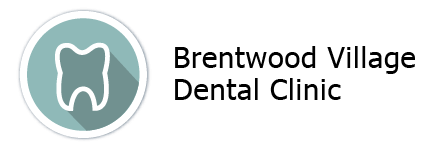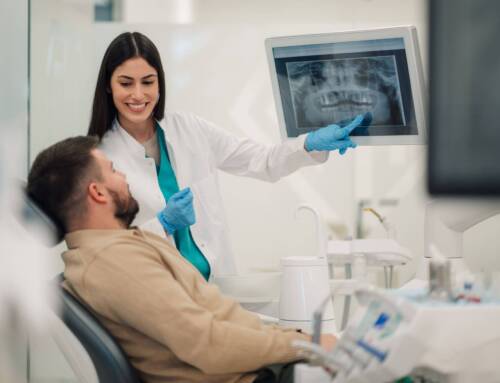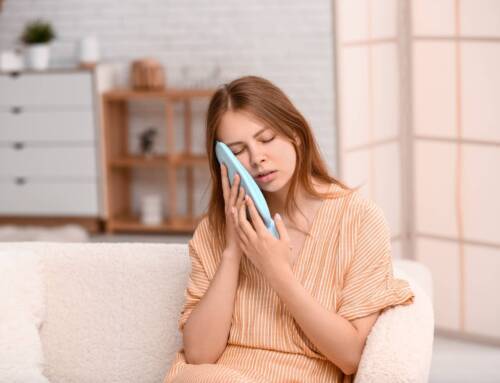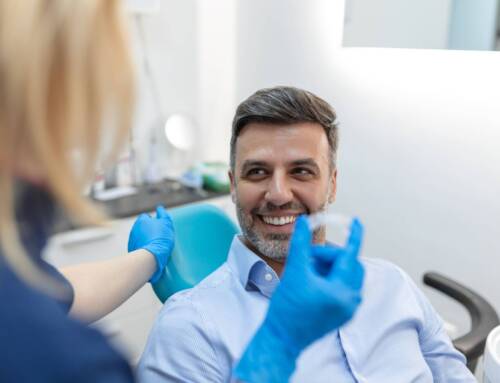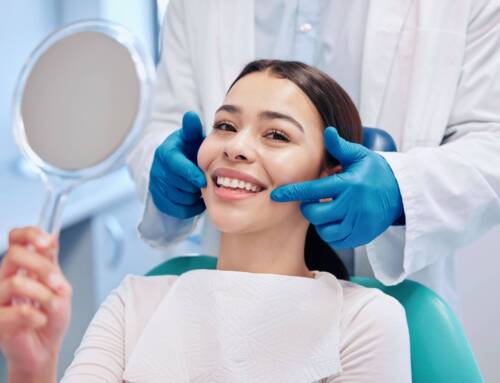We understand that COVID-19 is on the minds of most people these days. So, we have prepared this update to let all of our patients know what we are doing to keep them safe.
In May of 2020, Alberta Health, in conjunction with the Alberta Dental Association and College provided all dental offices in Alberta with a list of mandatory COVID-19 specific protocols and policies, which they have updated numerous times as more is learned about the virus.
Here at The Brentwood Village Dental Clinic, we immediately implemented all the original protocols as well as all the subsequent provided updates. However, because we felt that more could be done to ensure the safety of our staff and patients, we implemented numerous additional voluntary policies that go above and beyond those that are mandated.
Staff:
- In order to ensure that our staff has the knowledge to keep themselves and all of our patients as safe as possible, we implemented a rigorous in-house COVID-19 specific training program that is mandatory for all staff. This program is updated as new information becomes available and is reviewed with all staff on a routine basis.
- All staff must complete a mandatory COVID-19 declaration and temperature checks twice per shift.
- Proper hand hygiene is strictly enforced.
Personal Protective Equipment (PPE):
- Personal Protective Equipment that meets or exceeds current industry requirements has been purchased in ample quantities. All staff members are required to wear the appropriate items, specific to their individual roles, at all times when in the clinic. For instance, our receptionists who do not perform any procedures in the mouths of patients, wear a Level 3 surgical mask, eyewear or face shield, and gloves where indicated.
- For staff that are directly involved in performing procedures in the mouth (Hygienists, Dental Assistants and Dentists), the PPE requirements depend on whether or not the procedure in question will generate aerosols. For non aerosol generating procedures, a level 3 mask, gloves, eyewear, and face shield are required. For aerosol generating procedures, an isolation gown, a level 3 surgical mask, eyewear such as glasses or goggles, a face shield, gloves, and a head covering are mandatory.
- All PPE is used for one patient only and then processed or discarded accordingly. Masks, gloves, and hair coverings are discarded in bio-hazard waste receptacles. Isolation gowns are put in biohazard bins and laundered in-house according to COVID-19 guidelines for temperature and duration of wash cycle. Goggles, glasses, and face shields are placed in receptacles for disinfection and processing at a later time. All bins for collection of used PPE items are located directly outside of treatment rooms.
Patient Distancing:
- In order to avoid patient to patient exposure and to facilitate proper patient distancing, we have closed our reception seating area. Patients are greeted at the clinic doors and escorted to treatment rooms one at a time. All paperwork, such as medical updates, insurance claim forms and appointment bookings are done one on one in the treatment rooms. The only time it is necessary for a patient to stop in the reception area is to make a payment. In this instance, before the patient is brought to the desk, we ensure that no other patients are in the reception area.
3-fold Screening Process:
- All patients are screened for COVID-19 symptoms and risk factors 3 times before they arrive for their appointment and then again on arrival. Once they arrive, before entering the clinic, all patients have their temperature taken and complete a COVID-19 declaration. If any risk factors, symptoms, or a high temperature are identified the appointment is postponed until the situation is resolved according to Alberta Health guidelines.
Reception Area:
- Plexi glass partitions have been installed on our reception desk. All surfaces are wiped twice with a Health Canada approved medical grade surface disinfectant after every patient. This includes door handles, visa terminals, reception desk, clipboards, pens etc.
- Hand Sanitizer is supplied in reception (as well as several other areas throughout the clinic). Upon arrival, all patients are asked to sanitize their hands.
- Face coverings are mandatory for all patients. If a patient does not have a face covering, they are provided with a surgical mask before entering the clinic.
- Contactless payments are available and encouraged. Multiple notices reminding patients of social distancing are posted. Floor markers have been placed where necessary.
Treatment Rooms:
- As mandated by Infection Prevention Polices that have been in place for decades, all clinical surfaces in our treatment rooms are thoroughly treated twice, with our Health Canada approved surface disinfectant, after every patient, for all procedures. When a treatment room is used for an aerosol generating procedure, the Computer monitors, keyboards, x-ray machines, vital signs monitors, switches, etc. are covered with plastic single use barriers that are changed after each patient.
Instrument Sterilization:
- Our Infection Prevention and control policy for the sterilization of instruments used in patients’ mouths was designed with not only the strictest adherence to the processes mandated by the Alberta Dental Association and college, but it also has many safeguards and redundancies engineered to eliminate the risk of human error.
- In order to ensure strict adherence to our Infection Prevention policies staff, that are expected as a part of their job to sterilize instruments, must first complete in-house sterilization training and obtain a certificate of completion. This training is updated routinely to ensure consistency and meticulous adherence.
Equipment:
- We have 3 vacuum chamber sterilizers. These sterilizers are state of the art and reach a temperature 270 degrees Fahrenheit. Every day before any of the sterilizers are used and long before any patients are in the clinic, our staff conduct two industry standard and approved tests on each sterilizer. The sterilizers are not used until these tests are completed and the results show that they are all functioning properly. In addition to these tests, the sterilizer itself has fail safe mechanisms built right into it. If for any reason a cycle faults or the necessary temperature is not reached, an alarm will sound, the instruments will be quarantined, and the machine will be serviced. After a machine is serviced, we test it 4 times before it is returned to normal use.
Preparation of Instrument Cassettes:
- The instruments themselves are packed in holders called “cassettes”. When preparing cassettes for sterilization a Class 5 testing strip is placed inside. The cassette is then double wrapped with hospital grade surgical wrap. This wrap, the tape that is used to secure the wrap to the cassette, and the test strip that was placed in the cassette all have temperature indicators built into them. The cassette is then loaded into the chamber for sterilization. When the sterilization cycle is complete the cassettes are removed from the unit and all three temperature indicator tests are carefully inspected to ensure that the sterilization process was successful. The cassette is then signed by the staff member who inspected it and it is labeled with the date, time, sterilizer number and load number. Once this process is complete the instruments are put away. When unwrapping the instruments for use these 3 indicators are again visually inspected.

